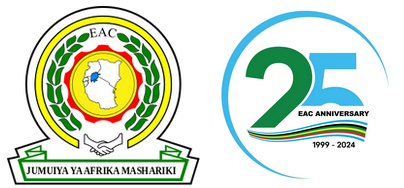
Disaster Risk Reduction and Management
The East African is a region prone to a great variety of natural and human induced hazards and related disasters like;
- floods,
- droughts,
- earthquakes,
- volcanic activities,
- landslides,
- strong winds,
- storms,
- tsunamis,
- lightning,
- diseases and epidemics,
- pests infestation,
- conflicts,
- terrorism,
- wild and urban fires,
- invasive alien species,
- collapse of buildings,
- traffic and
- industrial accidents.
Drought is the most common hazard both globally and also at the region. Climate Change is expected to further increase the hydro-meteorological hazards in the sub-region.
In combination with poverty and slow and negative economic growth, and environmental degradation, internally displaced persons and refugees arise multiple vulnerabilities of the communities, and frequently disasters affect human lives and essential assets required for further development.
These natural and manmade disasters pose a huge threat to socio-economic development of the region towards the realization of EAC’s core objective and mandate of widening and deepening co-operation among the Partner States in political, economic, social, security, cultural and development fields. With increased frequency and intensity of extreme climate and severe weather events, the region experiences the severe consequences of disasters as resources for development are diverted to finance disaster emergencies.
The knowledge and comprehension of disasters by the general public is still low thus making it difficult to prevent and reduce the impact of disasters to the Community.
To minimize the impacts on the region’s development, the EAC Partner States have realized the need to move from reactive disaster management to proactive Disaster Risk Reduction. All the EAC Partner States have therefore put in place some disaster management mechanisms and institutions at various levels of capacities.
The Community is emphasizing integration of Disaster Risk Reduction (DRR) and management into the sustainable development agenda to help create safer and more resilient communities in social, economic and environmental terms and encouraging Partner States to domesticate and mainstream policy on the aforementioned to ensure that ownership of the responses are made national, and at all levels of governance.
The areas of focus include DRR Policy and Coordination; Risk Information, monitoring and reporting; DRR Advocacy and Communication; Collaboration with Partner States in response to complex emergencies; and Resource mobilization. The priority areas on disaster risk reduction and management are on:
- Accelerate the finalization of the EAC DRRM Act in line with the SFDRR;
- Mainstream DRR and EAC Policies and Programs;
- Formulation of mechanisms for supporting and collaboration for Partner states in response to complex emergencies;
- Monitoring the Sendai Framework (2015-2030) implementation and the Africa Programme of Action;
- Develop appropriate risk information, including the development of disaster loss databases and risk profiles; and
- Organization of advocacy events, development of public awareness materials and mechanisms for data and information sharing and communication strategies for early warning.
